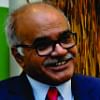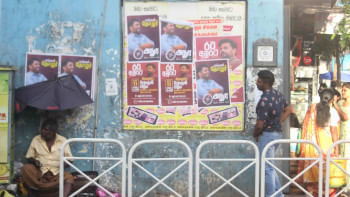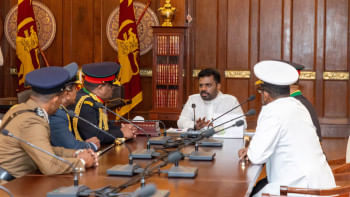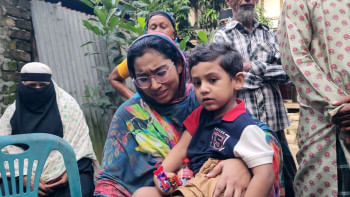The challenges Sri Lanka’s new government faces

Sri Lanka has recently elected Anura Kumara Dissanayaka as its new president. The election was critical for Sri Lanka for three reasons—first, it was the first presidential election since the country's 2022 economic meltdown; second, the election served as a referendum on the difficult austerity measures imposed on the country's road to recovery; and third, the economy was the key issue for the voters. While Sri Lanka's transition from an interim to an elected government is a welcome news and needs to be celebrated, the path ahead for it is far from smooth. The past two years have been quite tumultuous for Sri Lanka on political and economic fronts. Even though there has been good turn around in many aspects, the recovery is still fragile and significant socio-economic challenges remain for the new president. In a way, the new president has inherited a series of past problems, over and above of which new challenges have emerged.
In April 2022, Sri Lanka defaulted on $51 billion of external debt. By July, with the country facing shortages of essential goods and power blackouts, inflation was hovering at 60 percent. Sri Lanka underwent a sovereign default in April 2022, as its foreign exchange reserves ran out and public debt stood at more than $83 billion, half of which was owed to foreign creditors. Soaring inflation at close to 70 percent and commodity shortages triggered large-scale unrest. Anger over the government's handling of the crisis led to mass street protests, forcing Rajapaksa to flee the country and resign.
In 2023, as President Rajapaksa's successor, interim President Ranil Wickremesinghe, was tasked with reversing Sri Lanka's economic crisis. With few options on the table, it turned to the International Monetary Fund (IMF).
In 2023, Sri Lanka secured a $2.9 billion bailout from the IMF. It was a 48-month emergency loan, and as with all IMF deals, it came with strict conditions. In exchange for funds, the government of President Wickremesinghe was forced to remove electricity subsidies and double the rate of the value-added-tax (VAT). Wide-ranging austerity also included a sovereign debt restructuring. Following a $4.2 billion debt restructuring with China's Ex-Im Bank in October last year, Sri Lanka completed a $5.8 billion restructuring with a number of countries, including India and Japan, in June this year. In a last-minute agreement before the election, on September 19, the country clinched a deal with private investors to restructure $12.5 billion of international bonds, clearing the way for the release of its fourth tranche of IMF bailout funds.
As Sri Lanka moves forward, buttressed by the IMF deal, the country's economy has managed a tentative recovery. It is expected to grow this year for the first time in three years and inflation has moderated to 0.5 percent from a crisis peak of 70 percent. The rupee has stabilised and inflation has come down sharply from its 2022 peak. The World Bank forecasts the economy to expand 2.2 percent in 2024, following two straight years of negative growth. The country's debt-to-GDP (gross domestic product) ratio is expected to fall from 128 percent of GDP in 2022 to just above 100 percent by 2028, according to IMF forecasts. Debt servicing costs—the percentage of tax revenues needed to pay creditors—will also remain elevated. Sri Lanka's fiscal balance went from a deficit of about 4 percent in 2022 to a surplus of 0.6 percent in 2023. Yet, as the new Sri Lankan president takes office, he will have to tackle five major challenges facing the country.
First, the new president has pledged to have a new deal with the IMF. For example, he wants to change the IMF's insistence on treating external and domestic debt equally. He has also indicated that his government would try and push the IMF to shift the burden away from ordinary Sri Lankans onto external creditors. But given the fragile state of the tentative recovery of the Sri Lankan economy, trying to alter the terms of the IMF package may cause short-term pain.
Second, during the campaign President Dissanayake presented himself as the candidate of the change for those reeling under the austerity measures. Poverty in Sri Lanka is on the rise and the World Bank has estimated that between 2019 and 2023, poverty levels in the country more than doubled with over a quarter of the population living below the poverty line. The costs-of-living are still high and real wages remain significantly below pre-crisis levels. The new president has pledged to increase Sri Lanka's income tax-free threshold and exempt some health and food items from the 18 percent value-added tax to make them more affordable. These will not be easy tasks.
Third, wide-ranging austerity also included sovereign debt restructuring, which are meant to lower debt costs and free up public resources for things like education and healthcare. That is not happening in Sri Lanka. Recent financing deals did not provide enough debt relief, and it requires debt to be paid down through high budget surpluses, meaning less spending on public services. Sri Lanka's fiscal position is also hindered by a low tax base. The tax-GDP ratio in Sri Lanka is about 8 percent—among the lowest in the world. Sri Lanka also holds the world's highest interest payments to government revenue ratio and the grace period on bilateral loan repayment will expire in 2028. On the current trajectory, Sri Lanka may end up in repeated defaults in the future.
Fourth, the geo-political issues surrounding Sri Lanka are also a challenge. The country, like many other nations across South Asia, tend to oscillate between the pro-India and pro-China rhetoric, and it cannot afford to alienate either country. China and India are also not the only major powers with interests in Sri Lanka. In 2023, the US International Development Finance Corporation announced a commitment of half a billion dollars to support the development of a deep-water shipping container terminal at the Port of Colombo. Such projects aim to dilute China's economic influence and reaffirm Sri Lanka's geostrategic importance along vital maritime trade routes in the Indian Ocean.
Finally, leading Sri Lanka out of its economic woes will require policy consistency. Over time, damage done by economic mismanagement and unwise policies put in place by successive Sri Lankan governments have weakened the Sri Lankan economy. Sustained implementation of structural reforms is also necessary.
Selim Jahan is the former director of UNDP's Human Development Report Office at UNDP in New York.
Views expressed in this article are the author's own.
Follow The Daily Star Opinion on Facebook for the latest opinions, commentaries and analyses by experts and professionals. To contribute your article or letter to The Daily Star Opinion, see our guidelines for submission.

 For all latest news, follow The Daily Star's Google News channel.
For all latest news, follow The Daily Star's Google News channel. 





Comments